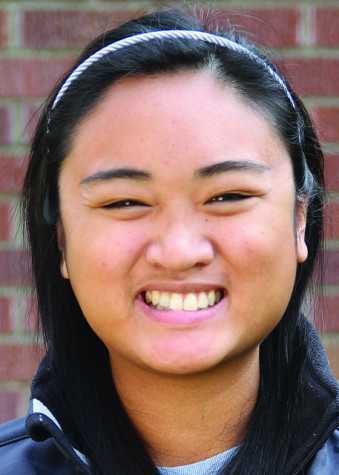One-room schoolhouse a reminder of Eastern community’s heritage
June 11, 2013

On a daily basis students, pass by the Cheney Normal School Heritage Center, and most may never walk inside during their college career.
The one schoolroom is open by appointment or the occasional open houses and is run by the department of education. Visitors are encouraged to sign the guest book and ask questions.
Some of the groups who visit the schoolhouse include school field trips, groups and clubs, according to coordinator and schoolmarm Valerie Schillinger.
Inside, there are wood-top desks of different sizes for school children, chalkboards on each desk, a library, cloak room and various old artifacts you would normally see in a one-room schoolhouse in the 1900s.
The schoolhouse would have students from ages 5 to 15 or 16.
It was used as a schoolhouse from 1905 until 1929, and was restored when brought to Eastern in 2000, according to Schillinger.
Original items in the schoolhouse are the floor and the siding. The artifacts, piano, desks and teacher’s desk were all donated.
In the 1900s, it would be lucky for a school to have a piano and a teacher who played, according to Schillinger.
“My favorite item is the children’s wood-top desks. Each [desk] has a drilled hole in the upper right corner for an ink bottle, [and] the various designs of ironwork frames are quite intricate,” said Schillinger.
When the bell rings, it can be heard throughout campus. Its original use was to call in students. Today visitors can ring the bell, and it is also rung on special occasions such as graduation.
The schoolhouse has a longtime history. It is 108 years old and comes from Newport, Wash.
“[The Cheney Normal School Heritage Center] is a legacy to our teaching college. People would come here and get their teaching certificate and go out to rural communities and be schoolteachers,” said Schillinger.
EWU was first named the State Normal School in 1889, the same year Washington became a state. According to the history of EWU, the school was an institution “for the purpose of instruction of persons, both male and female, in the art of teaching the various branches that pertain to good common school.”
The late Dr. Charles Miller, professor of education, searched for 10 years for a one-room schoolhouse in good condition and arranged for it to be brought to campus, according to Schillinger.
It took two days to be delivered in one piece driving at 10 miles per hour on side roads, according to Schillinger.
“The historic significance of the one-room schoolhouse in building a democracy is a legacy that I had hoped to pass on to future teachers. It symbolizes our heritage of providing education for all citizens,” said Miller.
The intent of bringing the schoolhouse to Eastern was to keep the spirit of education alive. “Originally we started off as an education school,” said Schillinger.
Today it still serves as a reminder that Eastern fosters teachers who will continue the tradition of educating.








